Background
I have been using the Native Instruments B4 and B4II software for several years.
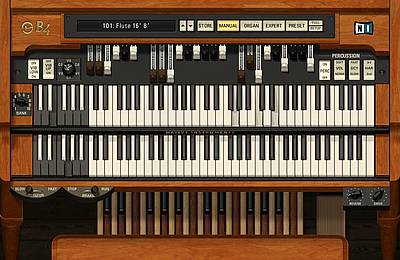
A piece of software that once loaded into a PC or Mac, becomes a musical instrument. It can run stand alone or as a VST plug-in which can run inside a VST host. That allows several instruments to be loaded at once!
As a keyboard player, an authentic Hammond sound is a must. In the recent past, I used a Hammond XK2 for several years played through a Leslie 145. When I discovered the B4 software, an A-B test with the XK2 proved the software was much better sounding. In fact, the same comparison with my 1957 B-3 was astounding. I sold the XK2 and armed with a laptop computer, I began using the B4 as my Hammond. I trigger the software with my Korg TritonPro and route the output to my trusty Leslie 145. The biggest problem with this is no drawbars. I could assign several knobs to the drawbars but I didn’t have enough knobs for the whole set of 9 drawbars. A couple of years ago, I purchased the B4II software that was bundled with the B4D drawbar controller. Now, I have drawbar control.
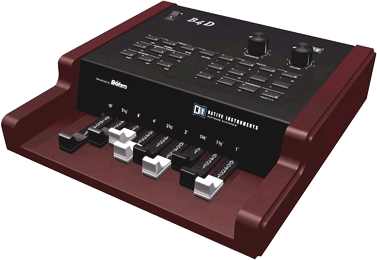
Being a keyboard player as opposed to an organist, this setup is just fine. However, being an organ technician, I’ve had the pleasure of being around many different products. One rather rare and unknown Hammond product was the Super B. Built in 1986, it was supposed to replace the B-3000 which was supposed to replace the X-77 which was supposed to replace the original B-3. Whew! I could go on and on about these models and why they failed but that’s another topic.
The Super B was Hammonds first digital sampled instrument. As promising as that may sound, it was a major failure. Besides the weak build quality, the sound, although good when playing single notes, suffered from phase cancellations when playing multiple notes. For example, if you played the middle C on the upper manual, then played the middle C on the lower, every time you hit the lower manual while holding the upper, the sound would change. Since the sound generator doesn’t begin to generate the note until the key is pressed, the phase angle between the two notes would be dependent on when the second note sounded. Sometimes it sounded normal, other times it would sound weak and other times just different. This is why sampling a B-3 in a standard consumer sampler doesn’t work. In a real B-3, the tones are free running and so the phase angle doesn’t change. You simply turn on or off the notes that are always running.
So Why a Super B?
Well, it was Hammond’s first console that had MIDI and looked like a B-3. So with MIDI, one could trigger the great sounds from the B4 software, while sitting at a full size organ console with pedals. In fact, the Super B sends velocity from the manuals so triggering other sounds like strings or piano would work with touch sensitivity. Cool!
I have been on the lookout for a Super B for a couple of years. Interested more as a project really. Well, I finally got one. FREE! In fact, it came from Hammond. They were going to throw it out. They remembered I was looking for one so they asked me if I wanted it. You bet! So, I saved it from the dumpster. When I received it, it didn’t work. There are some parts actually missing internally. I believe they used it as a source of parts. Anyway, a missing flat ribbon cable used to connect the computer to the sound boards turned out to be nothing more than a standard hard drive cable found in any PC. I found one in my spare parts that was the right length and after some cleaning, it finally fired up. It is still missing the volume pedal and internal MIDI sound cards but the organ sounds work fine.
The next step was to see exactly what it transmits through MIDI. After my tests, I determined that it does not send the drawbar settings through MIDI. Bummer. It does send note info, program changes with the presets, wheel info and button info. So, I need to make a way for the drawbars to send.
 There is a company called Doepfer located in Germany that makes MIDI products including DIY boards. They have a board that converts 16 analog signals into any MIDI info you program it to do. It’s called Pocket Electronics.
There is a company called Doepfer located in Germany that makes MIDI products including DIY boards. They have a board that converts 16 analog signals into any MIDI info you program it to do. It’s called Pocket Electronics.
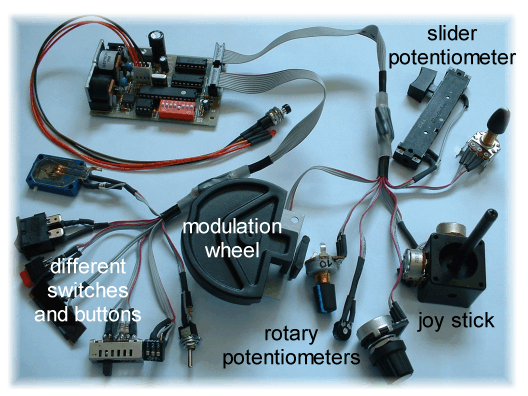
According to the specifications, the inputs must be between 0 and 5Vdc. So, I measured the Super B drawbar outputs and guess what? 0 to 5Vdc! Perfect. This means I can leave the Super B mostly stock and just parallel this device to the existing hardware. Another problem is I will need two. There are 16 inputs but I will need 20 for the drawbars. Possibly one more for the expression as I still don’t know if the Super B transmits that or not. (No volume pedal yet)
As of this point, I have MIDI’d the Super B to the B4 software and played it as a keyboard. I will order the Pocket Electronics boards to connect the drawbars. I will acquire a volume pedal and determine if it sends expression through MIDI. If not, there is an alternative. There are several inputs to the Super B that can be set as under expression or not.
Ultimately, I would be interested in building a PC and locating it internally as a replacement tone generator.
I’ll keep you informed!
Update 1 (10/22/2008)
Today I connected the Super B with bass pedals to my “Live” computer loaded with the softsynths. I loaded B4II and set the MIDI channels so the manuals and pedals all had their own drawbars etc. I plugged the output (N.I. Kore Controller/soundcard USB) to a TrekII Preamp Pedal and then to a Leslie 122a. I made some tweaks to the tones settings etc. in B4II and played away. In fact, I turned it up real loud!
I am jazzed about this project. Sitting at a full console Hammond and getting the B4II sound is lovely. The sound is really great. As exciting as it is to hear the pedals for the first time in B4, I’m disappointed with the pedal sound. Although authentic, the bottom falls out as you go down the pedal board. Just not enough low end! Hmm…
I’m getting the volume pedal next and will see if this organ transmits volume or expression through MIDI.
More later!
Update 2 (10/25/2008)
Today I talked with another organ enthusiast who has also tried using B4II with pedals. His comments were that the pedals were too weak in B4II to us in a real playing environment. I had hoped that it was just some adjustment that could be made since I was new to using the pedal tones. Looks like this may be a real problem. I mentioned to him that running more than one instance of B4 in a VST host may offer a solution. Each instance could be EQ’ed differently or, the pedals could actually trigger a manual in one instance since the manuals seemed louder in the deep bass than the pedals did. Of course, the pedals could trigger another program altogether but that’s getting away from the original intent of a software Hammond organ. I also was just pointed to another Hammond Organ software that I may need to try. Here’s the link.
VB3 The Ultimate Virtual Tonewheel Organ
See you soon!
Update 3 (10/26/2008)
OK. Loaded up Native Instruments B4II and VB3 in the Kore Host. I loaded the newly installed (demo version) of VB3 and gave it a run. Though very similar to the B4II, many behind the scenes adjustments are stepped where in the B4II they are continuous. The Chorus/Vibrato sounds very good too.
The VB3 sounds good overall. The key click is especially nice. You can even have it respond to velocity but not in the conventional way where more velocity equals more volume. Rather, they designed in a method of keying the 9 contacts individually. If you play hard, they mostly close all at once. If you play lightly, you can actually hear individual contacts closing. The maximum is 39MS from the first contact closing to the last. Cool feature.
The main thing I’m looking for here is the pedals. Remember in the B4II the pedals were too weak. So, I tried the VB3 pedals and…well… they’re different. In the B4II, the pedal tones are pretty accurate, but lose volume as you go down the pedal board. The lo “C” is just not there. Especially when compared to the manuals or a real B-3. The VB3 pedals have good volume and even seem to get louder as you go down. This is good! However, the tone is different. In a real B-3, each pedal keys eight tones. This is hard wired in the pedal switch assembly. This makes the pedal drawbars sound more complex than the manual drawbars. In the VB3, the pedal drawbars seem to sound more like manual drawbars. The volume is good, but in fact, since the complex sound isn’t there, the pedals sound an octave too high in the low end.
So, I started up the B4II and I must say, I’m liking the VB3 better. I setup the channels so I could play the B4II on the manuals and the VB3 on the pedals. This certainly makes the pedals better. Louder! I then tried mixing both sets of pedals together and that was even better. This brought back the more complex tone of the real B-3 from the B4II and the louder bottom end of the VB3 made the pedals much better to play.
I tried to play one of the manuals of the VB3 on the pedals. See, you can set the 16′ foldback to off so that the 16′ tone goes all the way down and doesn’t repeat on the lowest octave. Unfortunately, the sounds fades almost all the way out as you get close to the lo “C”.
So, mixing the pedals of both softsynths seems to work. The pedal volume is reasonable and, because there are two separate synths running, you can adjust them separately. One could turn up the VB3 for more pedal volume and even do some EQ’ing which wouldn’t interfere with the B4II.
So far, this is the best a Hammond Super B ever sounded to me. I should get my volume pedal next week and determine if the Super B transmits expression or volume. I will wait on purchasing any MIDI hardware for transmitting drawbars etc. until I get the software figured out. I still don’t like having to run two programs for one instrument! I would hope Native Instruments could fix the weak pedals so just one piece of software could do it all.
Update: Native Instruments B4 II has been discontinued!
Later on!
Update 4 (10/27/2008)
First direct comparison of the two soft organs, B4II and VB3. First, setting the first 4 drawbars to 8 on each organ. Setting the VB 3 to the upper manual and the B4II to the lower.
The bass end is nearly identical to both programs. The high end is louder on the B4II, especially the last part of the last octave. In comparison, the B4II almost seems shrill in that last octave. The VB3 is more tame and mellow. In the middle, there seems to be more going on with the VB3. It seems to be more alive. There is more resonance in the tone. After playing the VB3, the B4II seems sort of plain. I find this very interesting. The B4II sound is very good and safe and has satisfied me for many years. However, the VB3 seems a little more exciting. The Chorus even seems to be more alive.
I believe the B4II is more tweakable but I’m excited to see this new program. I think I’m going to go ahead and buy it. I would love to try it in a live setting.
Update 5 (10/29/2008)
After buying the VB3 program, I took it to Church and played it live! In this setting, I’m playing it like a keyboard so no pedals here. I am again jazzed by this program. I didn’t get to play around and tweak it tonight because we just had time to rehearse. I’m hoping this weekend I can go in and play around with it more in the Sanctuary setting. One difference at Church is I play through a Leslie 145 rather than the 122A in my shop. I could certainly hear the difference with the VB3 while playing and liked what I heard. So did the rest of the team! I have also found a Keyboard made overseas that uses the VB3 or B4II as its sound engine. Check it out.
Update 6 (10/30/2008)
Today the volume pedal came in for the Super B. I installed it and checked to see if it transmitted MIDI. IT DOES! Also, I am thinking at this point that the VB3 will be the software of choice. It has the best pedals which would allow for using one program for the whole thing.
I had the opportunity to “speak” through email with the programmer for VB3 and had a great discussion about his wonderful software. He sure has done his homework. We discussed my issues with the pedal tones and I think we may see an update in the future. Sweet!
My next stop is to acquire the MIDI hardware so I can transmit the drawbars etc. So far…so good!
Update 7 (11/2/2008)
Today I had my second session with VB3 at Church. Having played B4/B4II for so many years, what would I say stands out with VB3? Vibrato/Chorus. With the B4II, the vibrato and chorus settings are variable rather than stepped. I usually set the Chorus at a very minimum setting so that it was just perceived. I like having that much control. In the VB3, there are steps to the degree of depth. I have it set to the lowest setting and it is more than my setting in B4II.
It’s not bad as you might guess, I am really liking the additional depth here. Seems to make it more alive and breathing. So, could I just turn it up in B4II and have the same thing? Probably. Both softwares have excellent Vibrato and Chorus. I haven’t had VB3 long enough to decide if one is better than the other with Vib/Chorus. That suggests that they are both good in that department and not likely any reason not to use one or the other.
BTW..I am running VB3 in Native Instruments Kore 2 along with Akoustik Piano, Elektrik piano, FM-8, Pro-53, Massive and Absynth. I use Kore Controller for adjusting volumes of each program etc. No problems with the new addition of VB3 in the system. I have also run OPX-pro and Mtron in this setup:
- AMD Core2Duo 6000+, 4GB, 250GB, Kore 1 controller for MIDI and audio out. Midisport UNO 1×1 for additional keyboard input
- Korg TritonPro – Yamaha P-80
- Stereo monitors for instruments sounds and Leslie 145 for Organ
Update 8 (11/6/2008)
I wanted to see if I could have a look at Latency with a scope. I figured I could take a dual trace scope and connect one trace to the MIDI stream and the other trace to the audio. So the upper trace “A” will indicate MIDI info while the lower trace “B” will indicate audio. The latency should be indicated by showing the MIDI signal activity happens first and after some delay, the audio appears.
Update 9 (1/11/2009)
I’m certain the VB3 will be the software I will use. My interest now is how I might possibly remake the controls on the SuperB so that it more resembles a B-3.
A deeper investigation proves that I can implement standard controls that will integrate precisely with the software. I will remove all unnecessary circuits in the SuperB leaving just the minimum required for MIDI. Add the additional MIDI circuits for drawbar control and whatever else like the Vibrato knob etc.
OK… back to work!
Update 10 (1/25/2010)
I have ordered two 16 channel MIDI encoders for the Super B. 16 + 16 gives me 32 controls. Only 20 are needed for the drawbars so I will have 12 extra “controls”. The extra controls may be used for overdrive controls or the like. I’m still deciding on if and what any extra controls can be used for.
I had considered embedding a VST host in the organ but have decided to build this up as a MIDI controller instead. That will be the easiest way to go right now and I can always look into the other later..
Update 11 (2/6/2010)
Here’s a shot of the Super B with all boards removed that are not necessary for MIDI control. Two large boards that were the sound boards. This makes a lot of room for the new stuff.
Here’s the drawbars that I am going to add MIDI control to. These are DC control voltages going from 0~5Vdc. That is exactly what the Doepfer Pocket PC controller wants to see. If that hadn’t been the case then I would have just used the included 5vdc from the kit. This way however, I get a graphic drawbar readout from the Super B display. Not necessary but cool.
OK. The first Pocket PC is connected. (16 controls) I have the upper manual drawbars, pedal drawbars, and first 5 lower manual drawbars mapped. I used the free software that comes with the Pocket PC. You load it up on a PC, connect the MIDI connections to the in & out of the controller, and create a new preset. You can assign any of the 16 inputs to practically any control including MIDI channel.
Next will be to install the second controller mapping the last 4 drawbars. I will have 12 extra inputs to use as necessary.
Mapping done. All drawbars now operate perfectly.
Update 12 (2/8/2010)
Well this is turning out great. The first Pocket PC connected and transmitting drawbars. I had to disconnect the drawbars from the Super B circuitry because it kept causing the drawbars to jitter. Once I disconnected the Super B from the drawbars, they worked perfectly. Since there is no internal sound generation in the Super B anymore, there is no reason to keep the DB’s connected other than to see the drawbar setting in the LCD display. I can observe the setting by just looking at the drawbars themselves so no problem. The LCD screen was probably handy for observing the presets in the Super B when not using the drawbars, even though it did reflect the current settings.
I was planning on trying to use some existing buttons on the Super B like for percussion. Since the buttons are momentary, I was going to tie into the lamps which toggle on and off. Again…jitter. For some reason, the Pocket PC doesn’t like being connected to the Super B directly. Perhaps the voltages in the Super B aren’t that stable.
I have the second Pocket PC installed with all drawbars mapped. I have 12 extra inputs to use for percussion, vibrato and others. I also noticed a problem with the expression pedal sending out an awful lot of data that tended to affect the notes being keyed. I like having MIDI volume but it’s always good to keep the MIDI traffic to a minimum. There is a preamp board in this organ with multiple inputs. Some non-expressed and some expressed. I may try running the audio from the computer through this preamp and use the expression channels for volume. That way, I can disable the MIDI volume thus minimizing the amount of data going through the cable. That can be easily turned on or off from the Super B.
Next, I have to determine what to use for percussion and vibrato switches. Whether to modify the drawbar base where the existing switches are located and make new ones.
Tell you what, playing the VB-3 with pedals is very cool. Being able for the first time to change drawbar settings is also sweet.
Update 13 (3/20/2010)
OK. There is no turning back now! I’ve decided to not use the existing switches for percussion and vibrato since they are not located in the right places, and, they are momentary causing a new set of problems. I’ve decided to try to use authentic Hammond switches instead.
I found a set of drawbars, base, and switches on ebay. Received them this week. After looking at the B-3 base I’ve decided to try to incorporate it in it’s current form, into the SuberB. I removed the drawbars from the base so I have a base with all switches. This base is somewhat shorter than the base in the SuperB so I will have my work cut out for me.
First, I need to remove the back end of the base because it has a lip like in the front. I took my jigsaw to it. Next, I cut the SuperB base back enough for the base I just prepared to fit in.
I can easily wire up the toggle switches but the vibrato selector switch is a challenge. I’ve been looking for a 6-position rotary switch but no luck. I have a number of 12-pos switches though and am thinking I can use one of those. Still, I need 6-positions, not 12. The positions are created by having little valleys and hills in the switch plate and the rotary part has a ball bearing that rides this plate. If I could fill in every other one of these valleys, I could turn it into a 6-position.
I decided to fill these valleys in with solder. I had to completely take the switch apart and successfully filled it in so it acts as a 6-pos switch now. I basically filled in with solder, and filed it down until level with the peaks on each side. I’m surprised how well it works!
VB-3 uses one controller for the vibrato selection. The way it works is to divide the 0~127 range into 6 groups. So, I simply have to wire the switch so it selects between 6 groups of voltage representing the controller value groups. There is plenty of tolerance here. Here’s a picture of the wired switch. You may notice I had to short every other terminal. Remember, this was a 12-pos switch so by shorting pairs of contacts, makes it a 6-pos switch electrically.
Here’s a shot of the vibrato switches from underneath. In this pic, you will see that the original wiring is still intact on the rocker switches. I hope to wire them up tomorrow with the MIDI wires. You can also see the shortened base as the vibrato switch housing now overhangs the base.
In this picture, you can see the percussion switches all wired up and working. The small resistors in there are for pull up or pull down as needed. In other words, if you have a switch that is considered on when connected to 5Vdc for example, when the switch is off, a resistor is there to hold it to ground. Switching it on will overcome the resistor forcing it to 5Vdc. A 10K resistor is used so very little current is in play here. You just cannot leave any input to the MIDI controller in an open state.
One concern I have is the rotary switch. This switch is considered a shorting switch. This means that there is never a time that the rotating contact is floating. It is still touching the contact it’s leaving as it begins to touch the next one. So, a point in between each position both position contacts are shorted. This is no problem for all but one position. The position where it goes from ground to 5Vdc. You don’t want to have these two points short. While I had the switch apart, I filed a tiny part of the contact away between these two points to prevent the shorting. It measured correctly with my meter. This does mean though that for an instant between these two points, the input to the MIDI controller with float. I’ll report back once I have it connected and try it out.
So, here’s a pic with the old drawbar base installed.
Here’s a close up of the left side. You can see where the original SuperB panel was cut so the old drawbar base could fit in.
Here’s the right side. You will notice some holes. These were where the old style drawbars were mounted. I will have to come up with a way to hid the cuts and holes.
Here’s an overview of the current status of switches.
You might wonder why not just put the old style drawbars on and have a full set. I struggled with that idea. Two big issues with that. First, making it fit easily with the music desk and top. Keeping the oroginal drawbars intact allowed for easy reassemble. Second, I wanted to keep the display and there was no way to keep it without keeping the original drawbars. The display allows access to the MIDI settings. Manual MIDI channels, velocity on/off, bend range, expression MIDI on/off etc.
So there it is. Tomorrow I hope to wire up the vib switches. 🙂
Update 14 (3/21/2010)
Today I wired up the vibrato switches and selector. For the first time, all drawbars and switches work! (well, except volume soft) I’ll try to get more pictures of the latest wiring tomorrow. After testing it, I ended up playing it for an hour. I have to tell you, this project was more fun than I thought it would be. The Doepfer MIDI is very elementary to work with. Playin the VB-3 from a full console is awesome!
I’ll wire up the volume soft/loud switch and still have four MIDI inputs left over. I may wire in the overdrive functions and put them under the wood panels that raise up and down behind the switches. If possible, I’ll see what it takes to get a video of this project while it’s being played etc.
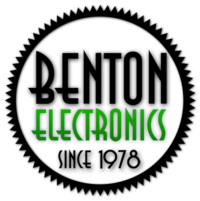
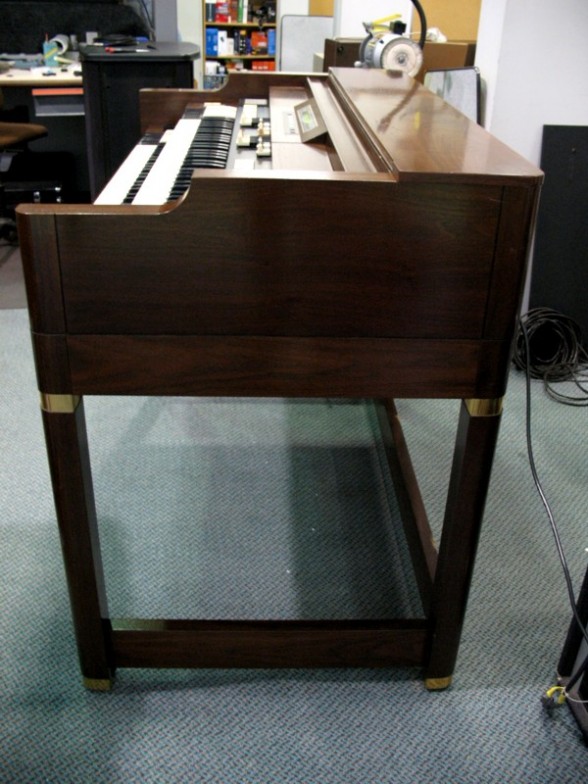
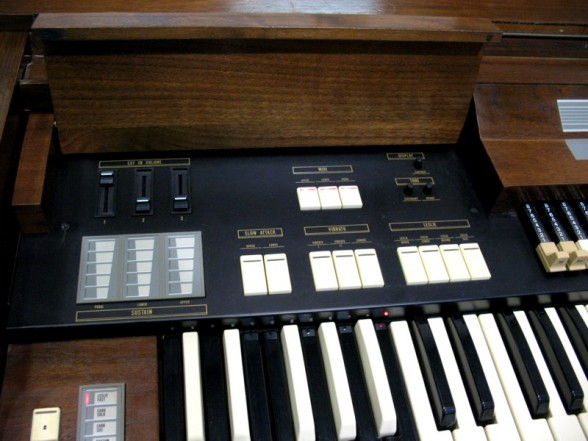
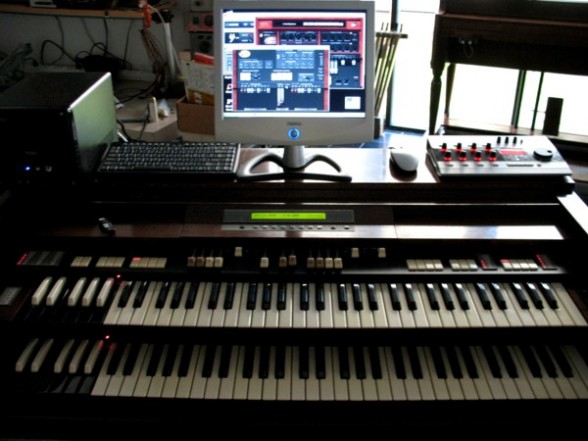

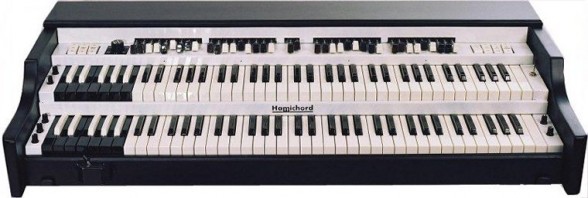
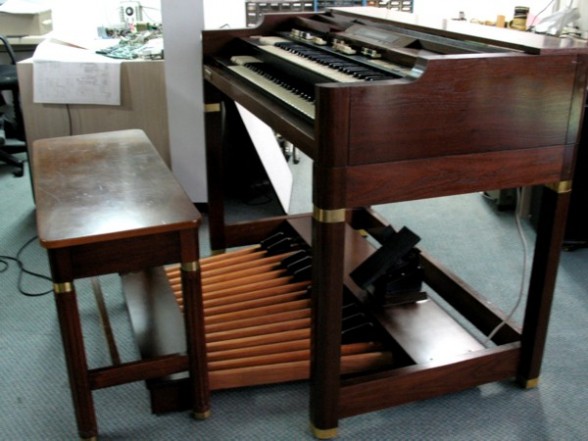
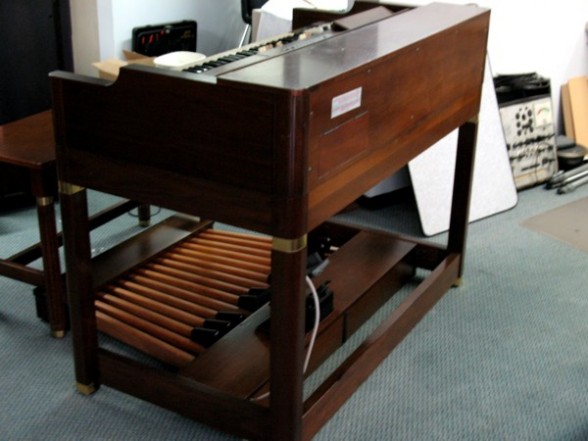
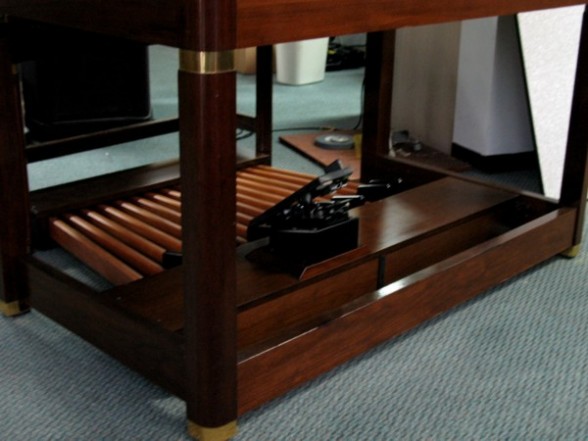
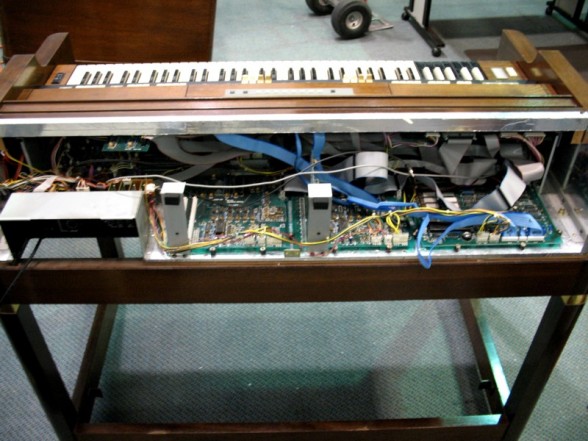
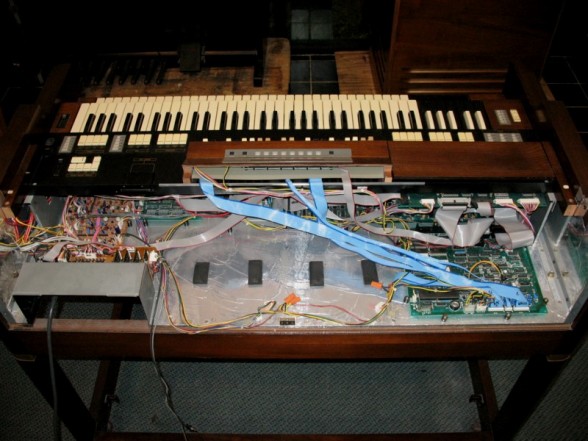

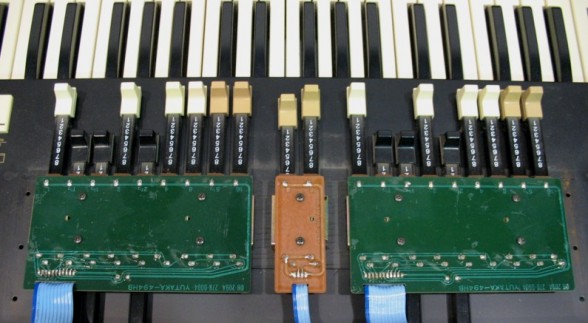
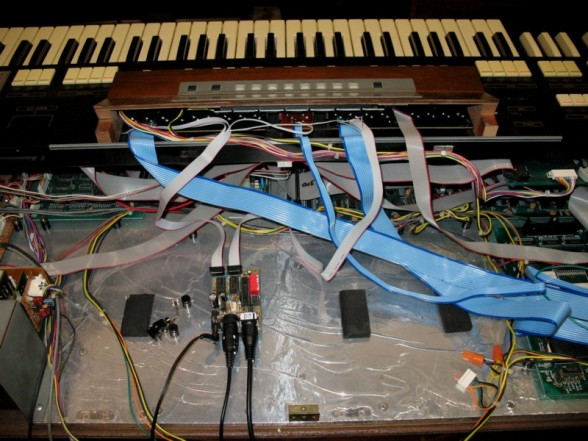
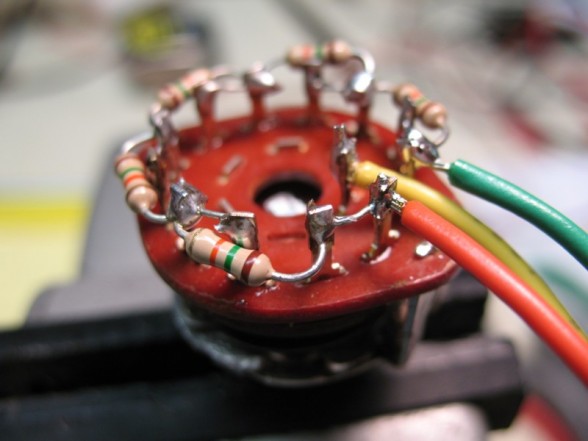
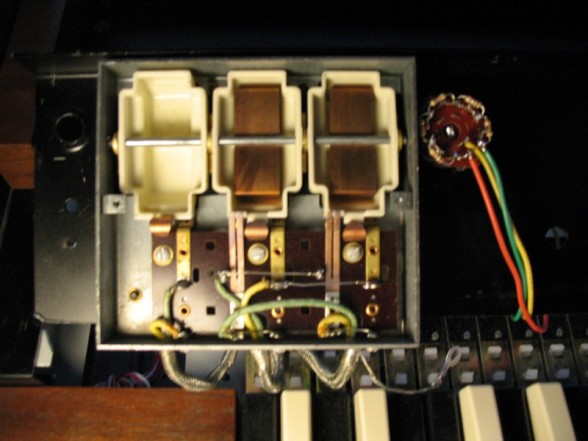
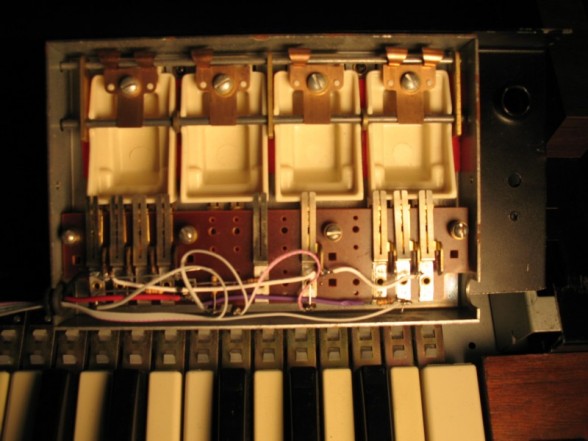

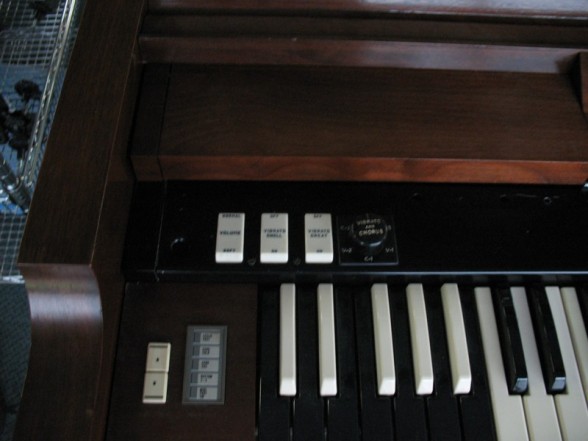

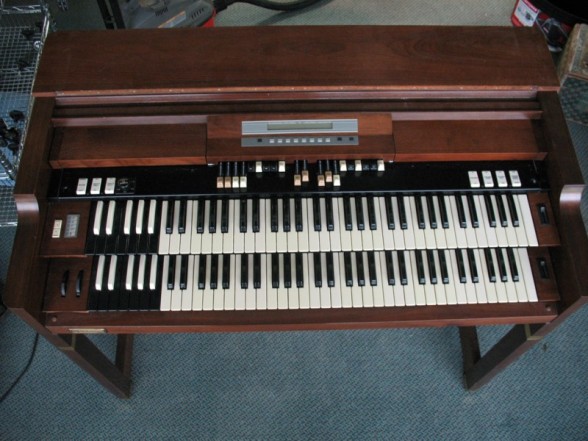
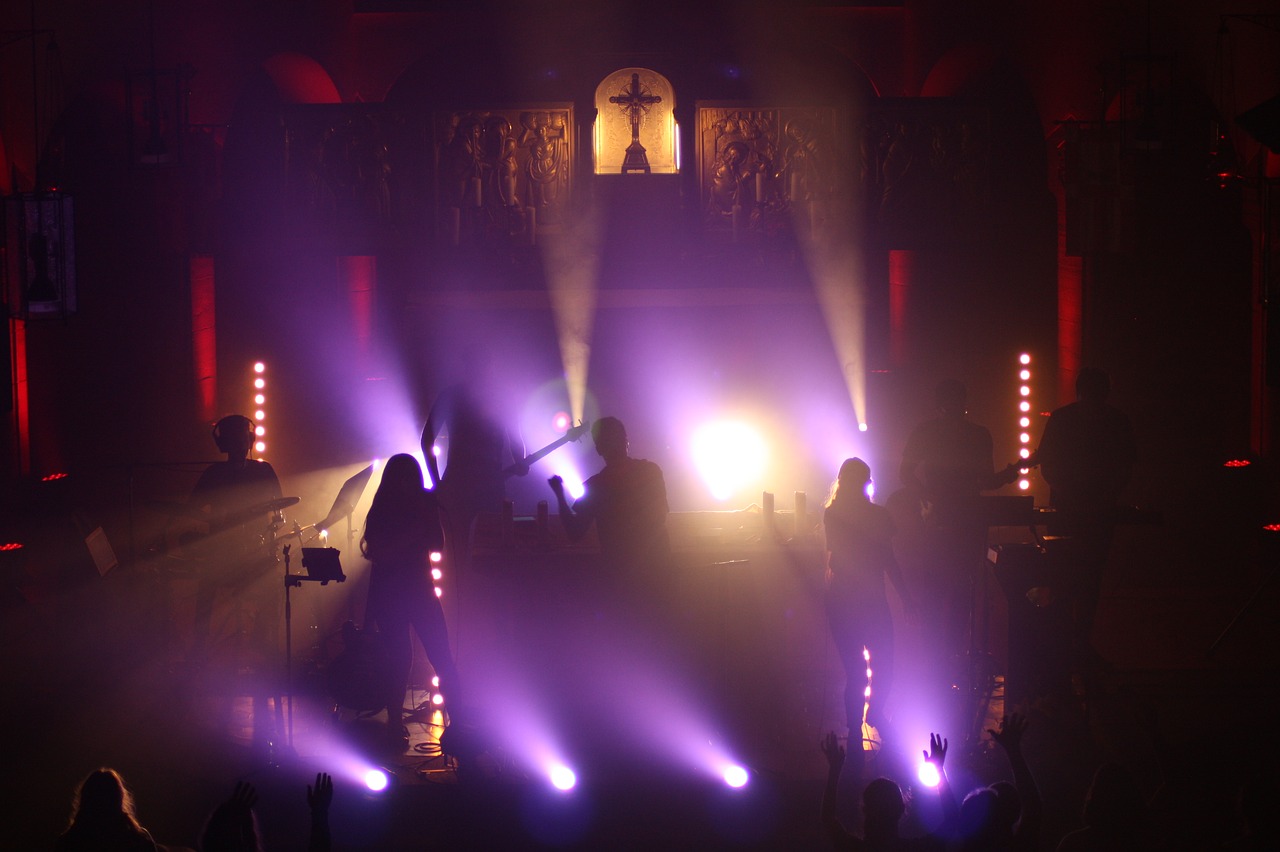
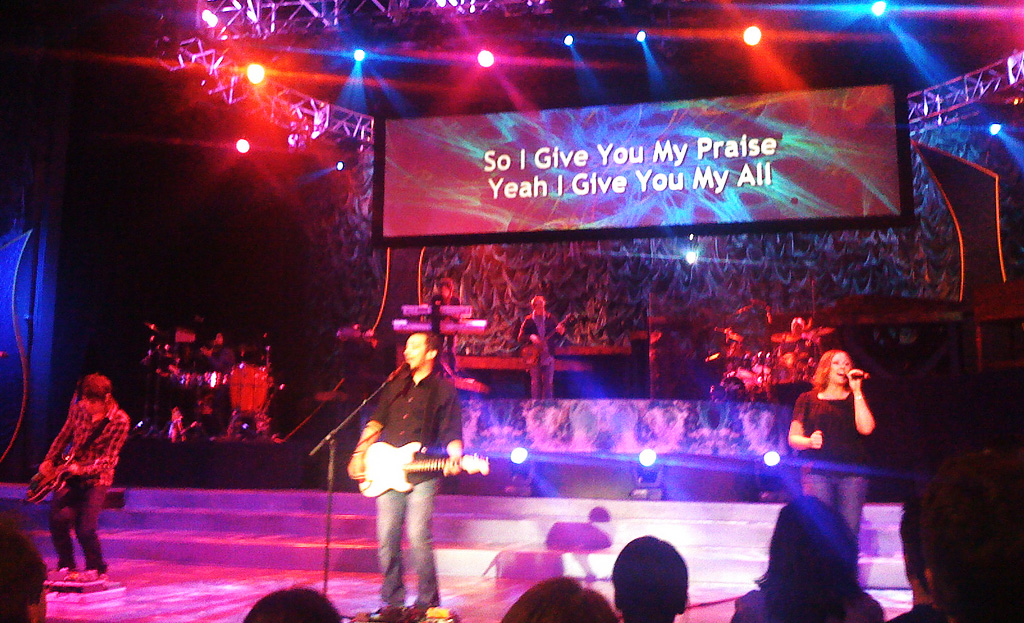
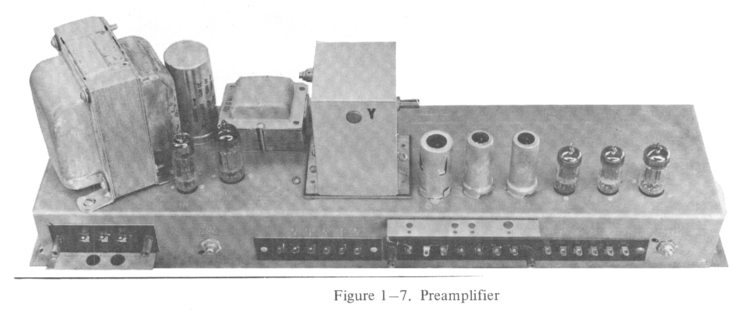
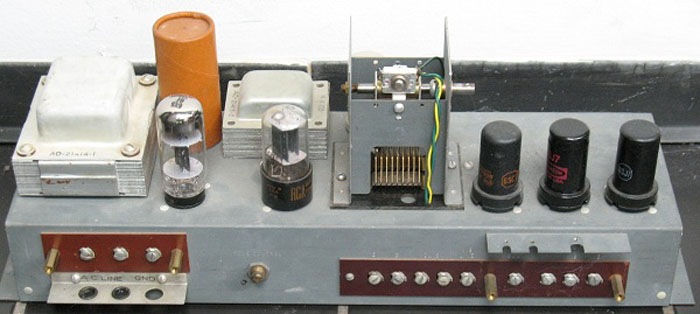

6 thoughts on “Hammond Super B MIDI Project”
Are you able please to give me the wiring (pinout) for the Leslie speaker. I suspect that the wiring in mine is incorrect.
Many thanks
Peter Kosseck
Hi there great to see what you have done to your super b 🙂
I have just found a working super b in a flat my mother has just bought
But cant find much about them can find any for sale here in the uk or in the states! Are they rare and are they worth anything?
They are somewhat rare and frankly don’t sound that good on their own. Not much value really. I got mine for free and it was a fun project.
Hi, I am looking at a Super B3 on Craigslist. Do you have any idea what this thing weighs?
Thanks,
–Dave
Comments are closed.